November 13, 2024 · 10 min read
Data-Driven Decision Making in School Budget Meetings

Shaimaa Badawi
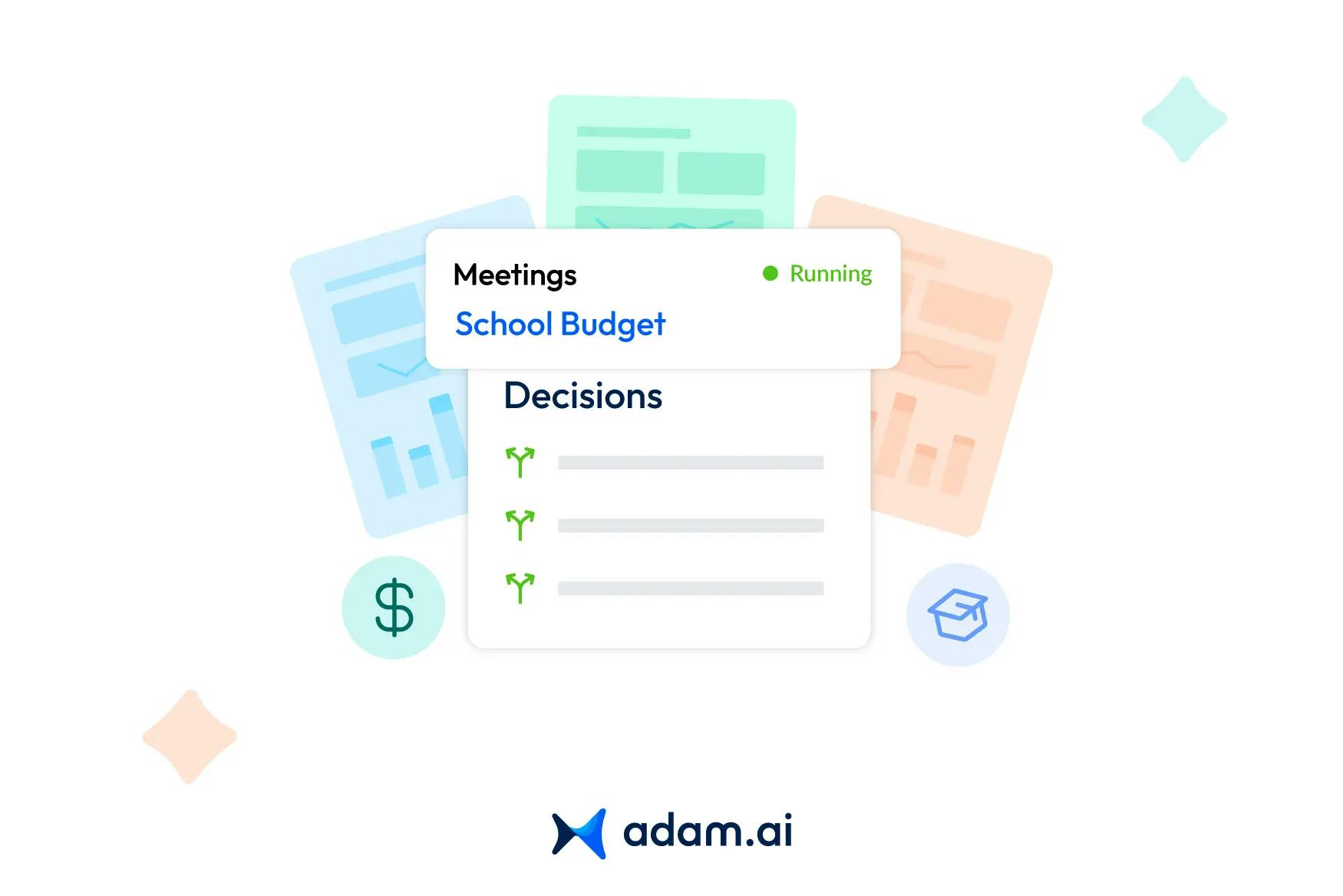
School budgets are the backbone of a thriving educational environment, dictating how resources are allocated to support students, staff, and facilities. With the increasing complexity of educational needs, data-driven decision-making has become essential for ensuring financial efficiency and accountability. This article explores the concept of data-driven decision-making in school budget meetings, its challenges, benefits, and the key practices that can transform financial planning into a strategic, impactful process.
What is data-driven decision-making in school budget meetings?
Data-driven decision-making in school budget meetings involves using quantitative and qualitative data to guide financial planning and resource allocation. Rather than relying on assumptions or anecdotal evidence, this approach bases decisions on empirical insights, ensuring that budgets are aligned with institutional goals and the specific needs of students, teachers, and the community.
In school budget meetings, data can include student enrollment trends, teacher-to-student ratios, program performance metrics, and historical spending patterns. By analyzing this information, schools can identify areas of need, optimize resource distribution, and forecast future requirements.
For example, if data shows declining enrollment in a particular program, resources can be reallocated to high-demand areas such as STEM education or special education services. Similarly, analyzing utility costs or technology spending can help schools identify inefficiencies and implement cost-saving measures.
This method not only enhances transparency and accountability but also ensures that every dollar spent contributes to improved educational outcomes and operational efficiency. Data-driven decision-making transforms school budget meetings into purposeful discussions that align financial decisions with long-term strategic goals.
Why is data-driven decision-making essential for school budget planning?
Data-driven decision-making is critical for school budget planning because it ensures that financial resources are allocated efficiently and aligned with institutional goals. Schools face increasing pressures to justify expenditures, improve student outcomes, and adapt to evolving needs, all while managing limited budgets. Here’s why this approach is indispensable:
- Enhanced transparency: Using data to support budgetary decisions fosters trust among stakeholders, including parents, teachers, and local governments. It shows that funds are being used effectively and equitably.
- Optimized resource allocation: Data helps identify high-priority areas, such as underperforming programs, outdated infrastructure, or growing student populations, ensuring funds are directed where they are needed most.
- Proactive problem-solving: Schools can analyze trends, such as rising operational costs or fluctuating enrollment numbers, to anticipate challenges and adjust budgets before issues escalate.
- Accountability and compliance: Data-driven processes align school budgets with regulatory requirements and performance metrics, ensuring that institutions meet their financial and educational obligations.
- Improved decision-making efficiency: Real-time analytics and dashboards enable school leaders to make faster, evidence-based decisions, reducing the time spent on debates and guesswork.
What are the key data sources for school budget decisions?
Effective school budget decisions rely on diverse and reliable data sources to ensure financial resources are allocated where they are most needed. Here are the key data sources:
- Enrollment data: Trends in student enrollment, such as growth or decline, help predict staffing needs, classroom sizes, and funding requirements for specific programs.
- Academic performance metrics: Data on test scores, graduation rates, and program outcomes highlight areas that require additional investment, such as remedial programs or advanced courses.
- Demographic information: Understanding the socio-economic background, language diversity, and special education needs of the student population informs equitable resource distribution.
- Historical spending patterns: Reviewing past budgets helps identify inefficiencies, recurring costs, and opportunities to reallocate funds for better outcomes.
- Facility and infrastructure reports: Data on building maintenance, utility costs, and technology usage ensures funds are allocated to essential upgrades or cost-saving measures.
- Staffing data: Information on teacher-to-student ratios, administrative costs, and professional development needs supports decisions about hiring and resource allocation.
- Community feedback: Surveys and feedback from parents, teachers, and community stakeholders provide qualitative insights into priorities and areas of concern.
- Regulatory and funding guidelines: Compliance requirements and grant conditions often dictate how certain funds must be spent, making these a critical data source for budget planning.
How can schools analyze data effectively during budget meetings?
Effective data analysis during school budget meetings ensures that financial decisions are strategic, transparent, and aligned with institutional goals. Here are key strategies for success:
1. Use centralized platforms
Employ data management tools that consolidate all relevant information, such as enrollment numbers, expenditure reports, and program outcomes, into a single, accessible platform. This reduces the risk of overlooking critical data.
2. Focus on key performance indicators (KPIs)
Identify and prioritize KPIs, such as cost per student, program efficiency, or graduation rates, to guide discussions and ensure alignment with institutional priorities.
3. Break down data by categories
Categorize data into areas like instructional costs, administrative expenses, and facility maintenance to identify patterns, inefficiencies, or gaps in resource allocation.
4. Visualize insights
Use charts, graphs, and dashboards to present complex data in a clear, digestible format. This helps stakeholders understand trends and facilitates more informed decision-making.
5. Incorporate predictive analytics
Use historical data to forecast future needs, such as staffing levels or infrastructure updates, enabling proactive budget planning.
6. Engage stakeholders
Include input from teachers, parents, and administrators during the analysis phase to provide context and ensure the data reflects on-the-ground realities.
7. Evaluate trade-offs
Leverage data to model different budget scenarios and assess the potential impact of reallocating funds or cutting costs in specific areas.
What challenges do schools face when implementing data-driven budget strategies?
Implementing data-driven budget strategies in schools can be highly beneficial, but it also comes with significant challenges that need to be addressed for successful adoption:
- Data quality and accessibility: Inaccurate, outdated, or incomplete data can lead to misguided decisions. Additionally, schools may lack the infrastructure to collect and store data systematically, making it difficult to access reliable information.
- Limited expertise: Not all school administrators and staff are trained to interpret complex data. Without proper training, decision-makers may struggle to analyze and apply insights effectively.
- Time constraints: Budget cycles often require quick decisions, leaving little time to thoroughly analyze data or explore alternative strategies.
- Resistance to change: Staff and stakeholders may be hesitant to adopt data-driven methods, especially if they perceive them as overly technical or a threat to traditional decision-making processes.
- Resource limitations: Implementing data-driven approaches often requires investment in technology, training, and personnel, which may be difficult for schools with already constrained budgets.
- Overreliance on quantitative data: While numbers provide valuable insights, they may not capture the full picture. Ignoring qualitative factors, such as community input or classroom realities, can lead to one-dimensional decisions.
- Compliance and privacy concerns: Schools must navigate regulations around data usage, particularly when dealing with sensitive information about students, staff, or finances, to ensure ethical and compliant practices.
How does data-driven decision-making improve resource allocation in schools?
Data-driven decision-making enhances resource allocation in schools by ensuring that funds, personnel, and materials are distributed where they can have the greatest impact. Here’s how it achieves this:
1. Identifying priority areas
Data highlights critical needs, such as underperforming programs, overcrowded classrooms, or outdated technology, allowing schools to direct resources to areas that require immediate attention.
2. Maximizing efficiency
By analyzing historical spending patterns and current performance metrics, schools can pinpoint inefficiencies, such as underutilized facilities or redundant expenditures, and reallocate funds to more effective uses.
3. Supporting equitable distribution
Data helps identify disparities among student populations, such as varying needs for special education, language support, or extracurricular activities, ensuring that resources are allocated equitably to close achievement gaps.
4. Forecasting future needs
Enrollment trends, demographic changes, and program performance metrics allow schools to anticipate future demands, such as hiring additional staff or expanding facilities, enabling proactive resource planning.
5. Justifying investments
Data provides evidence to support funding decisions, such as implementing new programs or upgrading infrastructure, helping stakeholders understand the rationale behind budget allocations.
6. Monitoring outcomes
Schools can track the impact of resource allocation decisions through metrics like improved test scores, increased graduation rates, or enhanced student engagement, ensuring that investments deliver measurable results.
What are the long-term benefits of applying data-driven practices to school budgeting?
Applying data-driven practices to school budgeting offers lasting advantages that extend beyond immediate financial decisions. Here are the key long-term benefits:
Sustainable financial planning
By analyzing historical spending data and forecasting future needs, schools can develop budgets that adapt to fluctuations in enrollment, funding, or operational costs. This ensures that resources are managed effectively over time, reducing the likelihood of budget deficits or overspending.
Informed decision-making culture
Data-driven budgeting establishes a foundation for evidence-based decisions across all levels of the institution. When leaders consistently use data to allocate resources, it encourages staff and stakeholders to adopt similar approaches in their areas, fostering accountability and a focus on results.
Enhanced student outcomes
Data enables schools to align their budgets with programs and initiatives that directly impact student performance, such as targeted tutoring, advanced placement courses, or technology upgrades. Over time, this alignment ensures that resources are consistently used to improve learning outcomes and close achievement gaps.
Improved stakeholder trust
Transparency in budgeting decisions, supported by clear data, builds confidence among parents, teachers, and funding bodies. When stakeholders see that funds are being used responsibly and equitably, they are more likely to support future initiatives and collaborate on long-term planning.
Scalable resource allocation
As schools grow or face new challenges, such as implementing hybrid learning models or accommodating diverse student populations, data-driven practices provide the flexibility to adjust budgets without compromising existing programs. This scalability ensures the institution remains resilient and effective in meeting future demands.
Proactive risk management
Data analysis helps identify potential risks, such as declining enrollment or increased utility costs, before they become critical issues. Schools can use this information to create contingency plans, ensuring financial stability even in the face of unexpected challenges.
Continuous improvement
Long-term data collection allows schools to assess the outcomes of past budgeting decisions, identifying successes and areas for improvement. This iterative process leads to increasingly efficient and effective resource allocation, ensuring the institution evolves with the needs of its students and community.
How can adam.ai support data-driven decision-making in school budget meetings?
adam.ai enhances data-driven decision-making in school budget meetings by providing features that streamline processes, foster collaboration, and ensure accountability. Here’s how these specific features align with the theme of school budget meetings:
- Agenda builder: Create detailed agendas with topics tailored to budget discussions, such as resource allocation, expense analysis, and financial forecasting. Assign time slots and responsibilities to ensure efficient and focused meetings that address all financial priorities.
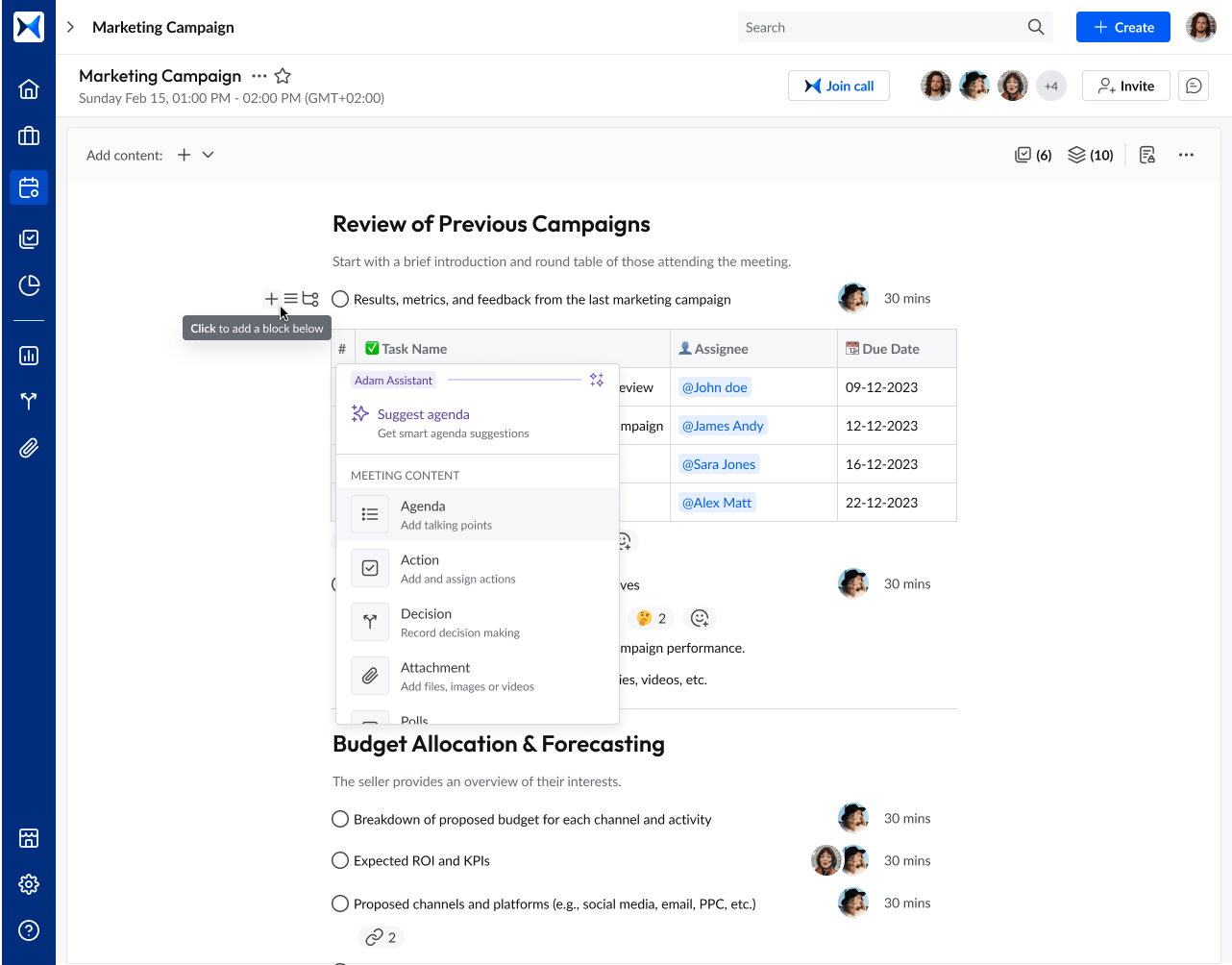
- Polling and decision making: Conduct live polls to gather input from stakeholders on critical budgetary decisions, such as prioritizing funding areas or approving expenditure plans. This feature promotes inclusivity and ensures decisions reflect collective agreement.
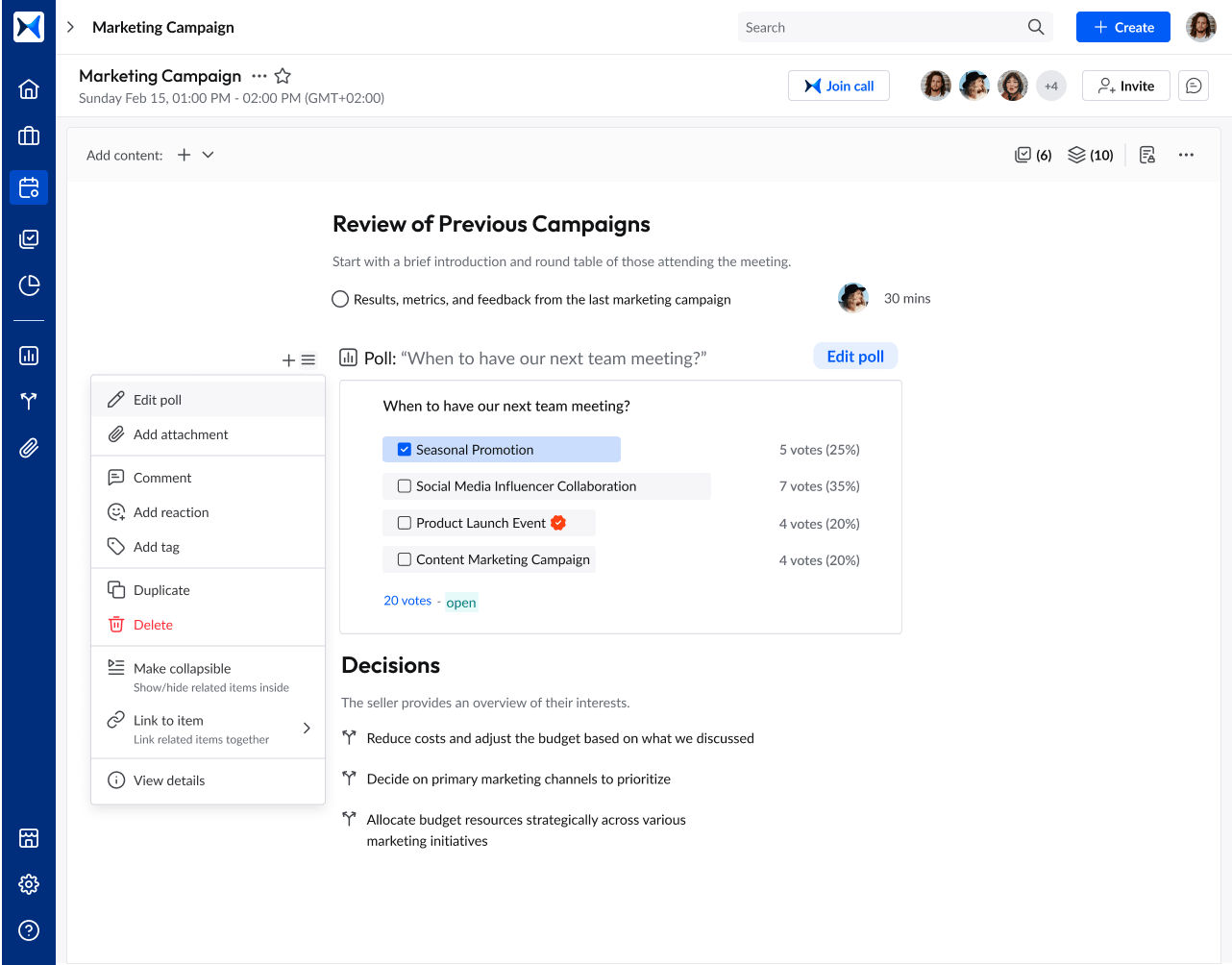
- Action tracking: Assign, track, and monitor tasks related to budgetary goals, such as implementing cost-saving measures or finalizing funding applications. With clear accountability and progress tracking, schools can ensure follow-through on financial decisions.
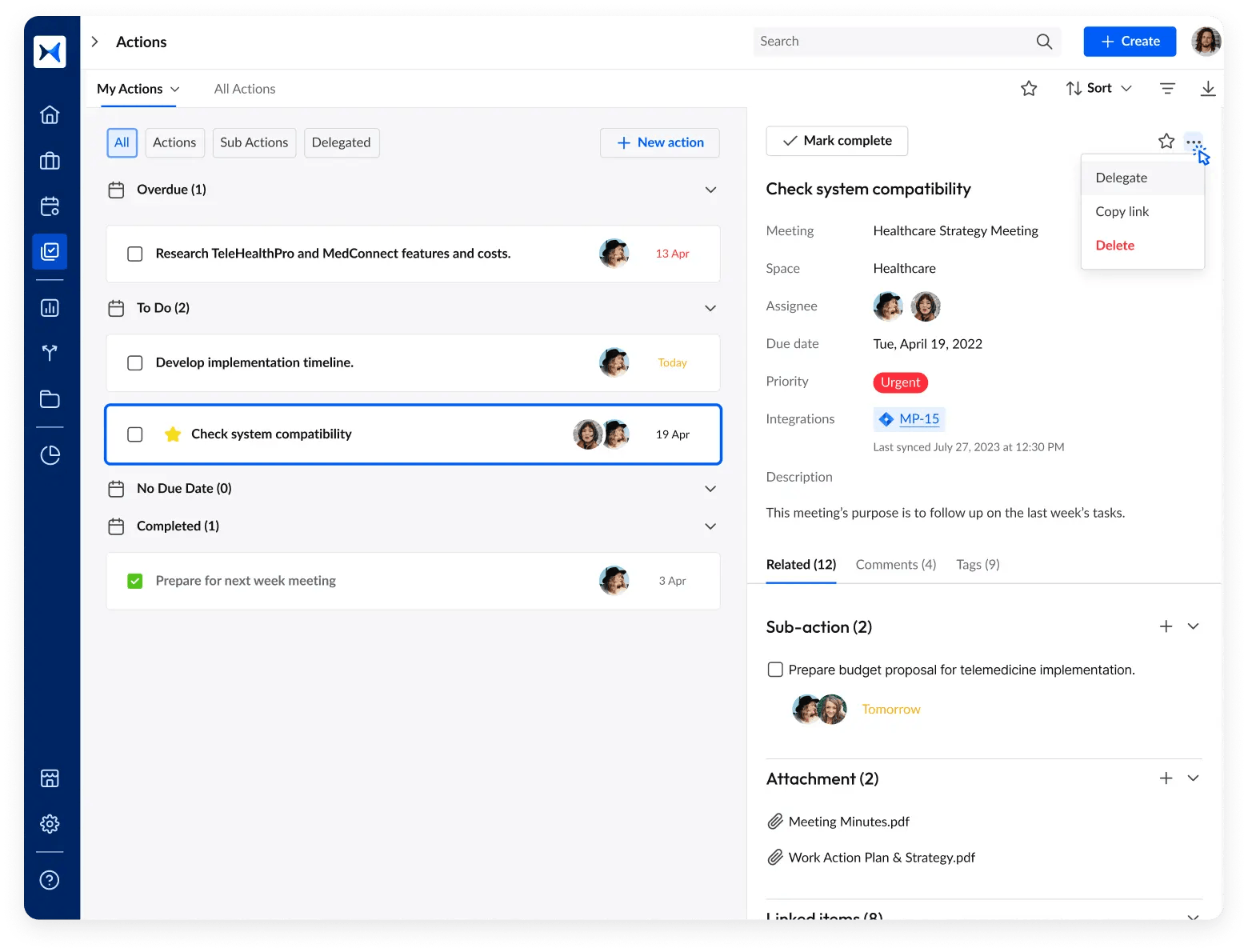
- Meeting minutes: Automatically generate and share minutes that document budgetary discussions, decisions, and assigned actions. This transparency ensures all stakeholders are aligned and provides a reliable reference for future financial planning.
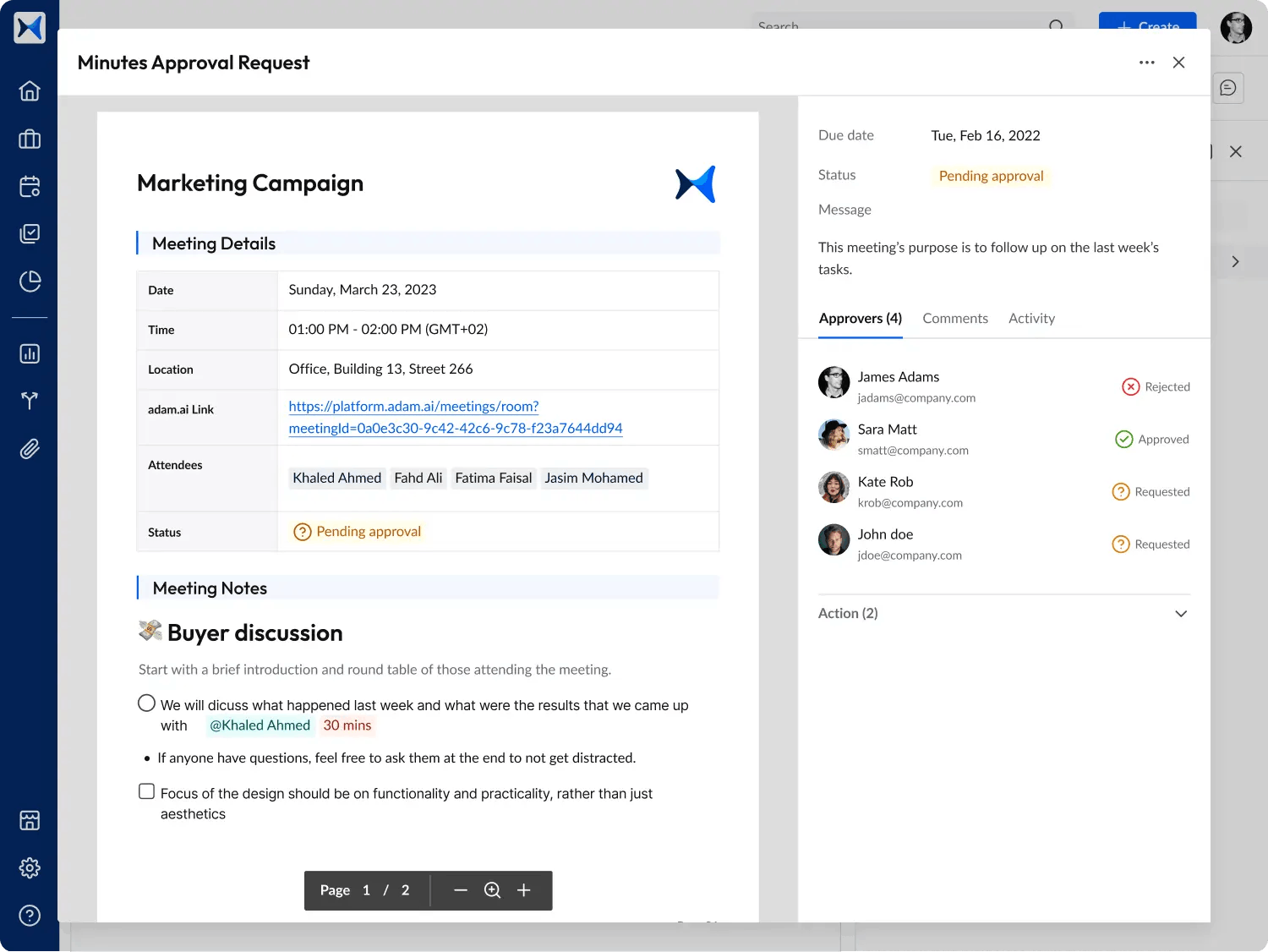
- Multi-space management: Organize budget meetings by department, committee, or specific financial projects, providing a structured overview of discussions and decisions across various teams. This feature simplifies collaboration and ensures consistency in financial strategies.
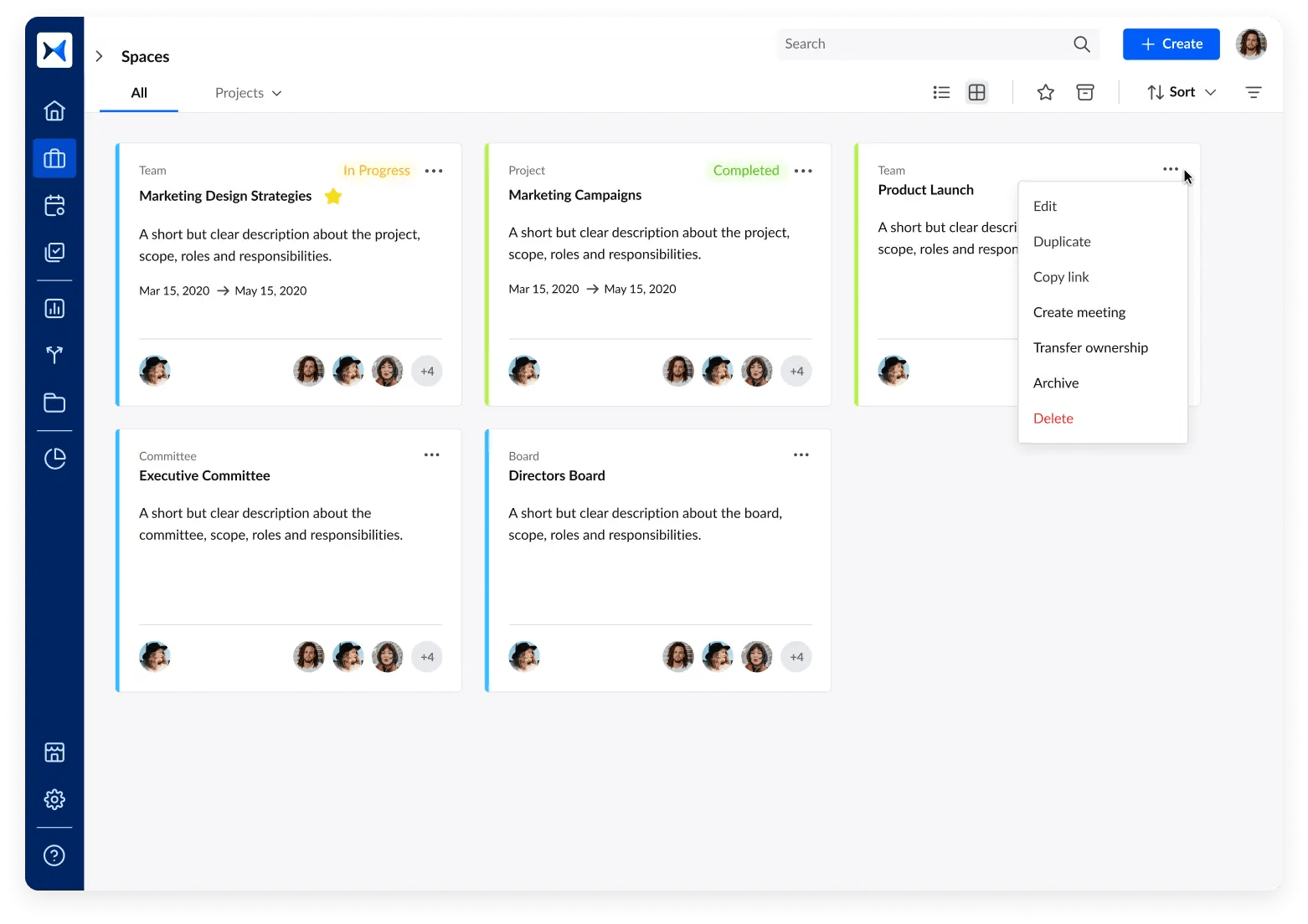
- Analytics dashboard: Leverage insights from the analytics dashboard to evaluate meeting outcomes, track action completion rates, and monitor key financial metrics. This data-driven approach enables schools to measure the effectiveness of their budgeting processes and refine strategies over time.
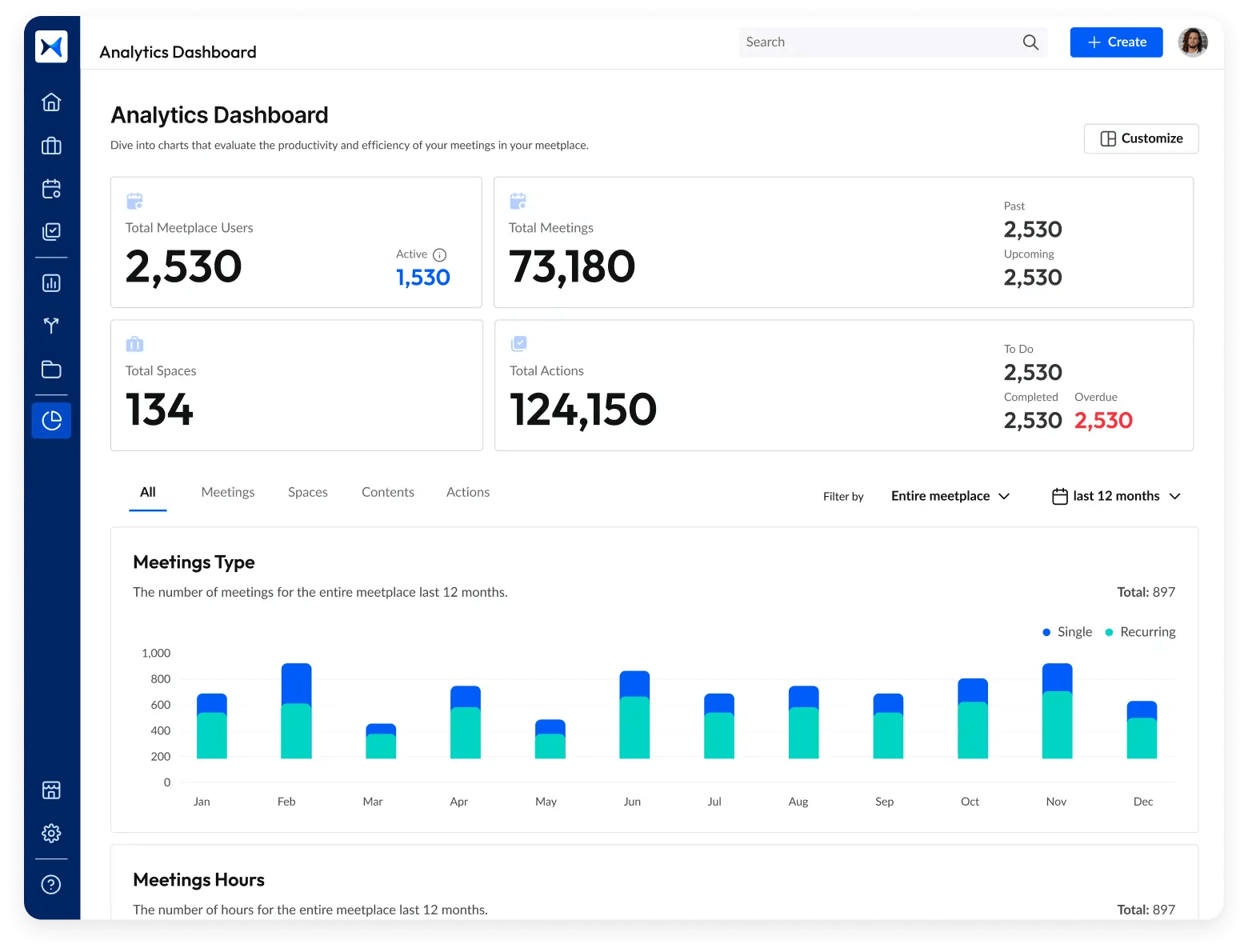
Transform how you conduct critical meetings—From meticulous preparation to effective execution and insightful follow-up, adam.ai integrates comprehensive analytics, full customization, and intuitive interfaces with powerful meeting management tools.
Easy onboarding. Enterprise-grade security. 24/7 dedicated support.
The bottom line
Data-driven decision-making brings clarity and precision to school budget meetings, enabling stakeholders to allocate resources efficiently and achieve long-term educational goals. With modern tools, schools can elevate their financial planning processes, ensuring that every dollar spent makes a meaningful impact.
And while there may be multiple solutions available, here is why adam.ai is the meeting management software platform you can trust:
- adam.ai is one of Atlassian Ventures' portfolio companies.
- In the meeting management software category on G2, adam.ai has been ranked a leader and a high performer for successive quarters in the past years.
- adam.ai has been included in the Forrester Report in the AI-enabled meeting technology landscape.
- adam.ai is trusted and used by powerful teams and organizations worldwide for all types of critical meetings, like board, committee, project management, and business development meetings.
- And most importantly, adam.ai integrates with your existing workflow, is SOC2 compliant, provides dedicated support and success, and has a free trial option.
Subscribe to adam.ai blog
Stay ahead with the latest insights—get our newest blog posts, tips, and updates sent straight to your inbox.